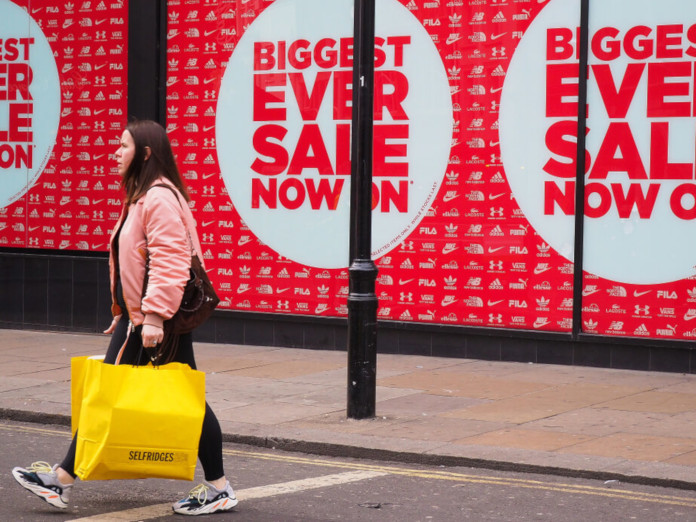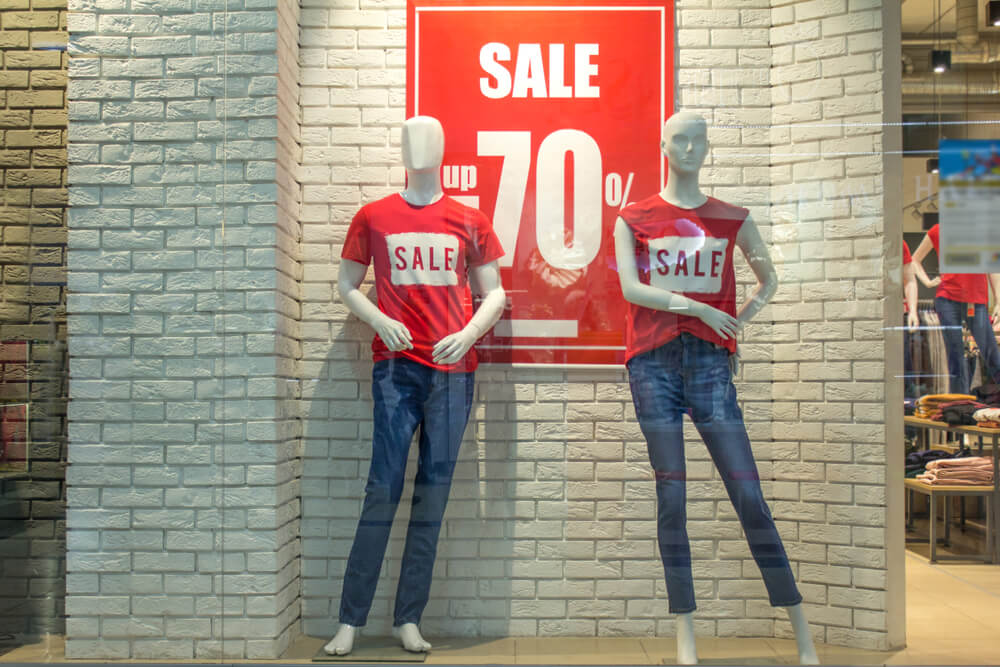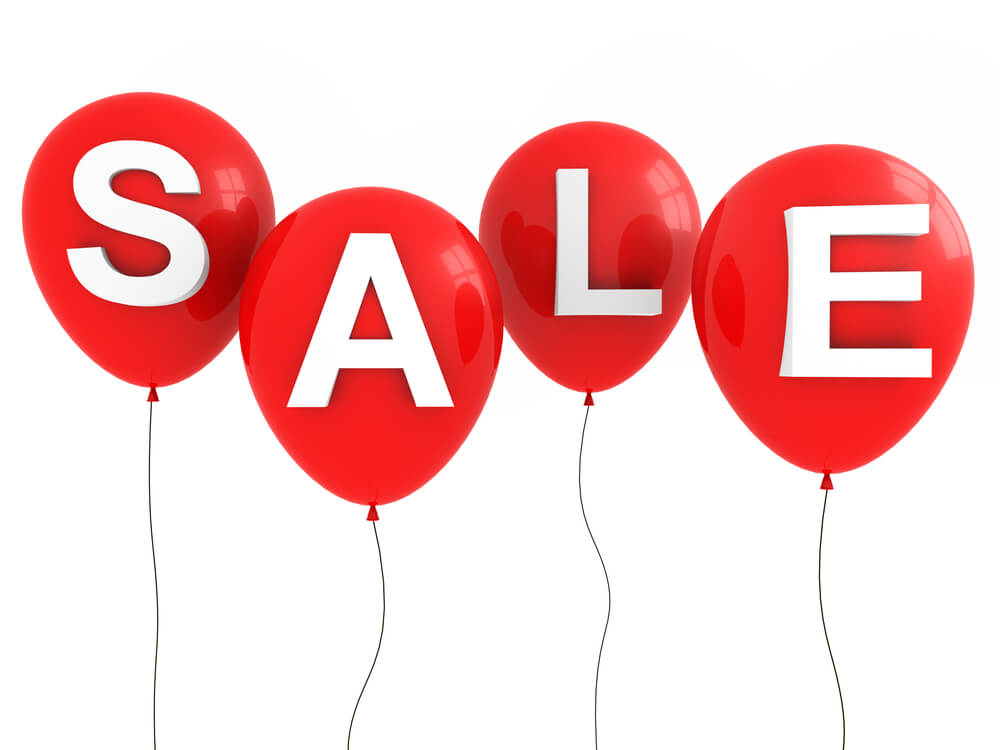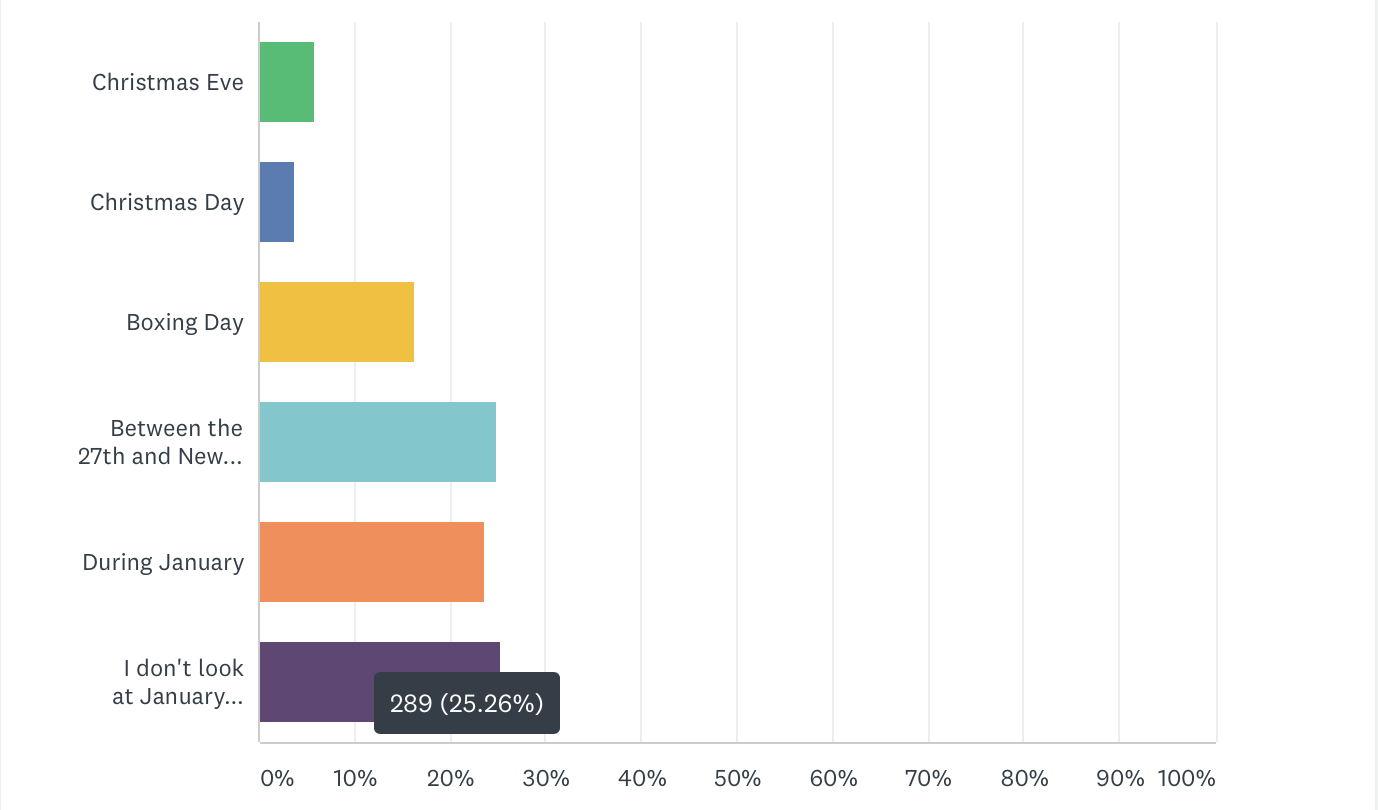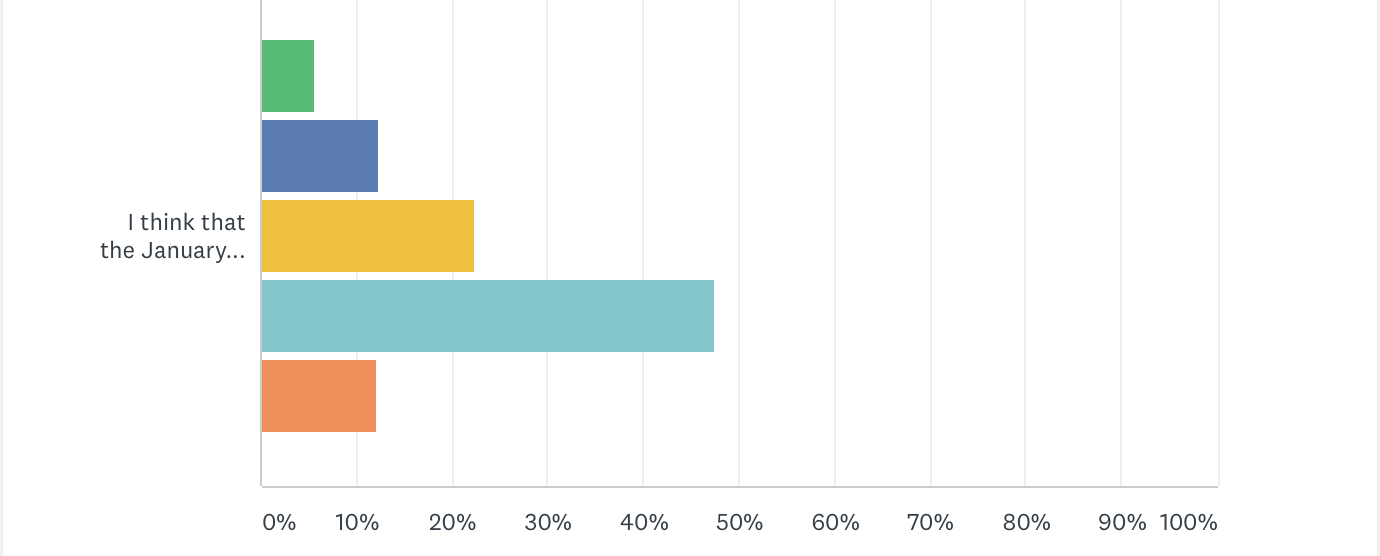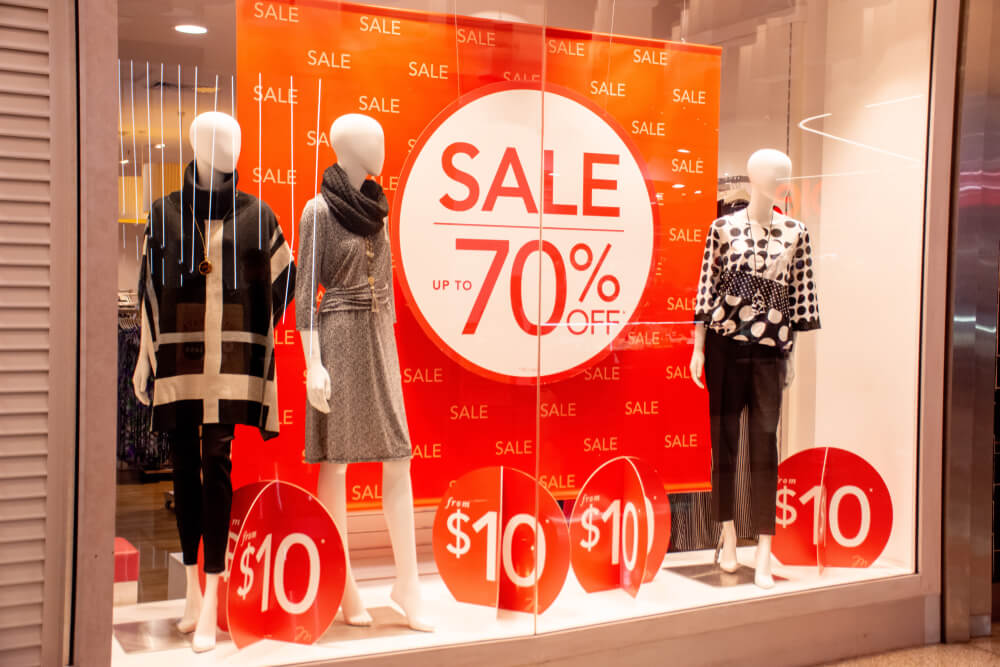Welcome to our WHAT, WHEN, HOW and WHY of January sales marketing. We’re going to be taking a look at WHAT discounts you can offer; WHEN are people doing their sale shopping; HOW do you go about promoting your sale; and WHY on earth is everything red and white?
WHAT discount will you offer, and can you back it up?
Expectations around January sales have never been higher, and retailers in particular are under enormous pressure to drop prices as far as they dare. Whether or not you choose to get caught up in a race to the bottom, it’s good to know what‘s going on in the current retail climate, and what sort of claims you’re able to make around your sale offer.
The Percentages game…
Does 10% really get anyone excited anymore? What does it have to be? 25%? 50%? Actually, over the last decade, retailers seem to have settled on a “70% off” message as the high street standard for January Sale discount offers.
70% – the magic number?
Many big names seem to have settled on 70% as their sweet spot. Boots, HMV and Topshop have all opted for lucky number 70.
It almost feels as though retailers are choosing the mix of products to include in their sale specifically to come in at the magic number.
Last year ASOS, Gap and River Island all increased their savings offer from 60% to 70% while their sale was ongoing in response to competitor activity.
Remember a January sale doesn’t have to mean clearance – for many sectors it’s possible to buy sale stock at discounted rates to create a fresh offer.
This can help you sidestep having to make damaging price cuts when it comes to core equity items. To an extent, you can also shape your buying strategy so that you arrive at an offering that allows you to make a 70% claim.
Loss leaders will help attract interest and footfall as well as nudging up your percentage discount claim, but remember to limit stock and watch your overall margins to make sure you still come out on top.
Top tip: Watch your competitors and defend your margin.
Bold claims!
Not only do we have to try to meet the expectations of our audiences, we have to be able to back it up too. But, how do you stay on the right side of advertising standards with your discount claims?
Is the saving calculated against an RRP?
In the eyes of the watchdogs, RRP doesn’t really mean all that much. You’ll need to demonstrate that the product has been openly offered for sale at that RRP for a significant period. A manufacturer’s recommendation is not enough to substantiate a savings claim. When selling a newly released item, you won’t be able to substantiate a percentage saving claim based on previous sales as no one has ever sold the item before.
Don’t inflate prices just to discount them!
The answer is not to sell an item at a higher price for a brief period just so you can drop the price almost immediately. The ASA upheld a complaint against Asda for raising the price of a breakfast cereal for 1 day in order to then make a discount claim. When a complaint is made, the ASA also look at what sales were completed at the higher price to establish that it was a genuine reference.
How long does the higher price have to be offered?
As a rule of thumb, the higher reference price should have been charged for a significant period that exceeds the amount of time that promotional price was offered. The ASA describes this period as “sufficient in length to establish that the higher prices were the usual prices”.
If I offer “up to 70% off”, how many of my sale items actually have to be discounted by 70%?
In the past, 10% of sale items by quantity had to the discounted by the maximum percentage, but that has now been relaxed. Current ASA guidance is to make sure that “a significant proportion of sale items are discounted at the maximum saving”. A precedent was set when a complaint was made to the ASA in 2017 about Better Bathrooms UK. Better Bathrooms made a 70% claim, but when the ASA found that only 8.63% of the number (not value) of items on sale were offered at a 70% discount, they upheld the complaint.
Do not mislead!
While some of the guidance is frustratingly vague, what matters most is that you’re able to defend your discount claims should a customer or competitor challenge them. The abiding principle here is do not mislead or exaggerate potential savings. For detailed guidance about what claims you’re able to make as part of your January sales marketing, we recommend you visit the Advertising Standards Authority website at www.asa.org.uk, visit www.gov.uk or seek professional legal advice.
WHEN are people shopping the January Sales?
…and how to what extent do they view January sales as an opportunity to save? As part of the Solopress Christmas survey*, we asked shoppers:
When do you start looking at January Sales offers?
We also asked to what extent they agreed with this statement:
I think that the January sales are a significant opportunity to grab bargains.
HOW do you promote your January sale?
The January sale is no time for subtlety. It’s time to throw everything at it, and print is a cost-effective way to temporarily transform your retail space.
Even though you use these materials temporarily, it doesn’t mean they have to be single use. Future proof your larger and more durable printed collateral by avoiding dates and specifics. That way, you can store and reuse a significant proportion of your sale materials next year.
These are some Sale essentials that should be on your display shopping list:
Swing tags
A swing tag is a piece of collateral to attach to your products themselves, they’re especially effective for clothing retailers who can attach tags to hanger and labels. You can even do as some retailers do and brand your sale as the “red tag sale” and mark all items included in the sale with a conspicuous Swing Tag.
Posters
If you have windows, now’s the time to use them. Make your contribution to Sale fever on the high street by announcing your offer. Be big and bold and highlight your top line discount. As an alternative to posters set back from the panes, you may want to consider blanking out your windows with cladding, posters, or a bespoke paper.
Other “Point Of Sale” material
Shelf edge strips, table talkers, strut cards and many other smaller pieces can help build a bigger picture. You may operate a pretty clean and clear display environment as standard, but the January sale is not a time for minimalism. It’s time to break your own rules and fill the available space.
Signage
Your sale message, printed in wide format onto stiff board, can help shout about your offer both indoors and out. Suspended banners, free standing displays and even handheld “Golf” signage boards can help direct footfall to your location, especially if you’re just off the high street.
WHY always red and white?
Do you go red and white for January? Red, white, and maybe a hint of yellow may have zero association with your core brand, but these colours can still come into play when it comes to January sales marketing.
The big sale seasons are the times when you get a free pass. It’s excusable to forget about consistency for a few weeks. You can be safe from devaluing your brand at this time because all bets are off. Everybody’s doing it anyway.
There’s certainly an argument for doing something different and setting yourself apart, but why swim against the tide?
Go with the flow and join with your high street neighbours to paint the town red and white. Here’s why those colours are so effective at building that bargain-hunting frenzy:
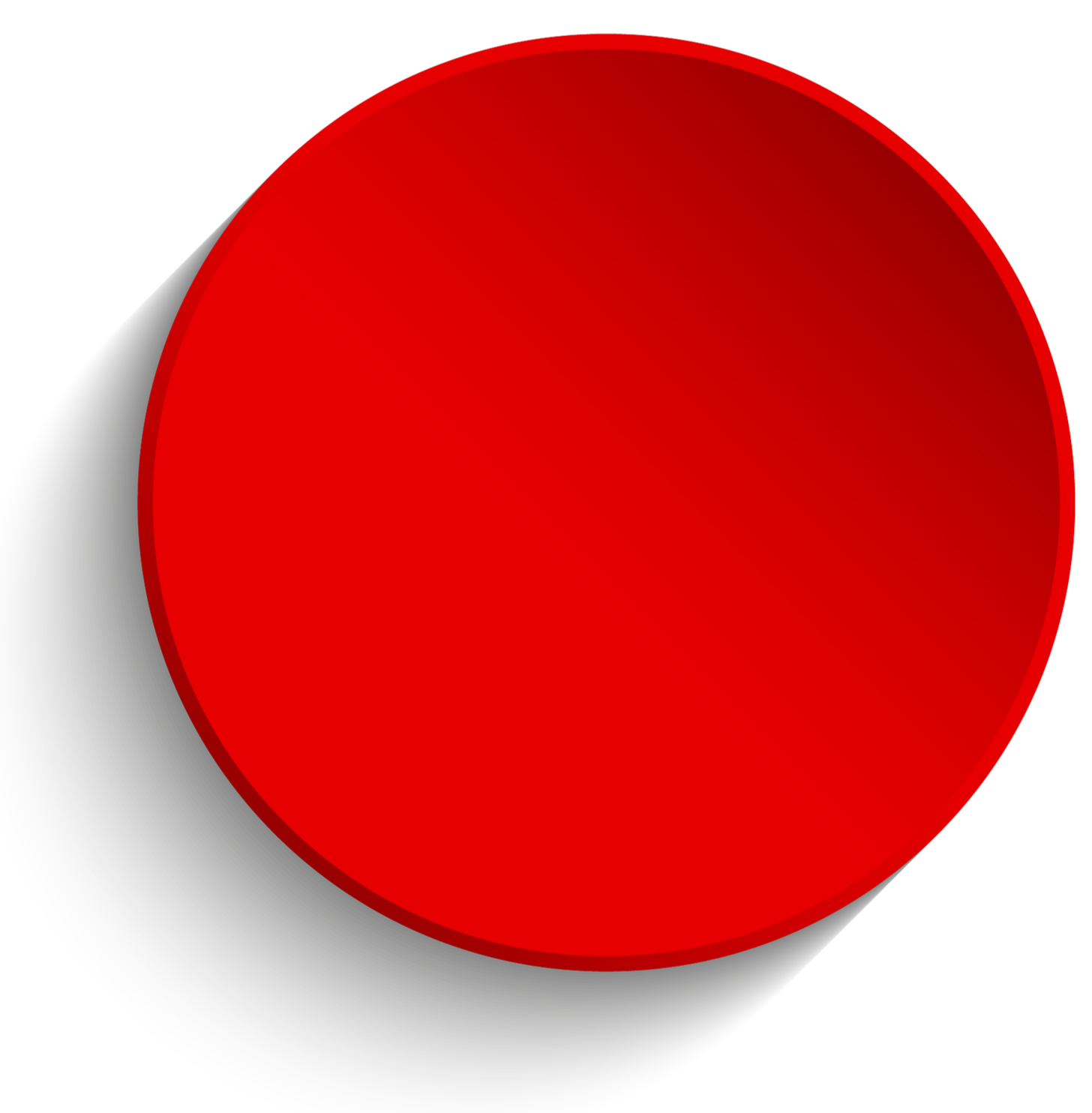 Red
Red
Associated with: excitement, energy, love, passion, urgency
Einsteinmarketer.com states that red “has also proven to have physical effects, increasing blood circulation, breathing rates and even metabolism.” According to website Small Business Trends, red “creates a sense of urgency, which is good for clearance sales.”
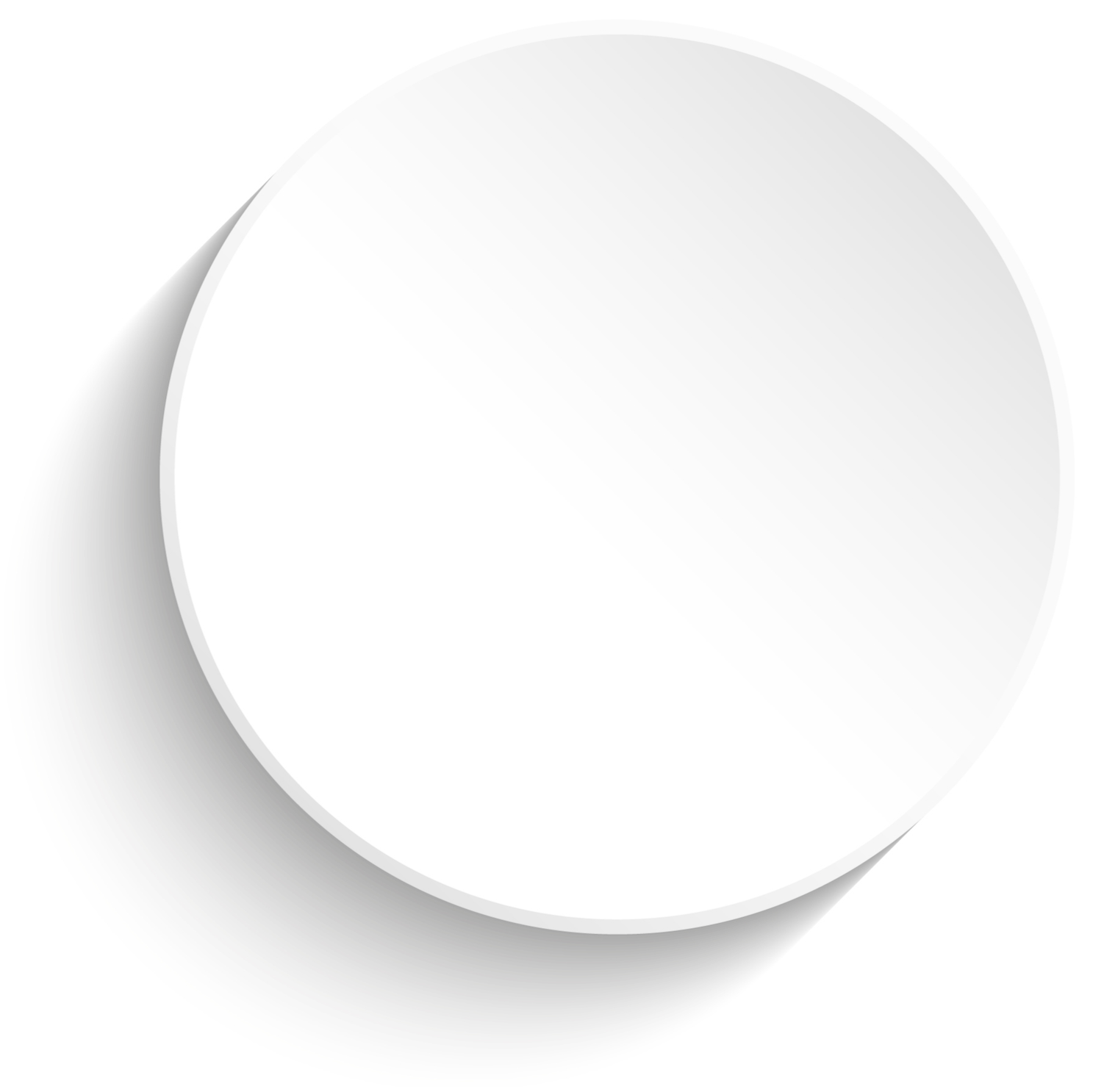 White
White
Associated with: honesty, simplicity, balance, purity, clarity, efficiency
According to mental health resource verywellmind.com, white is used in January sales marketing and branding “to convey a feeling of safety, purity, freshness, and cleanliness, as well as to create contrast.” Used in conjunction with red, that contrast also brings legibility and focus.
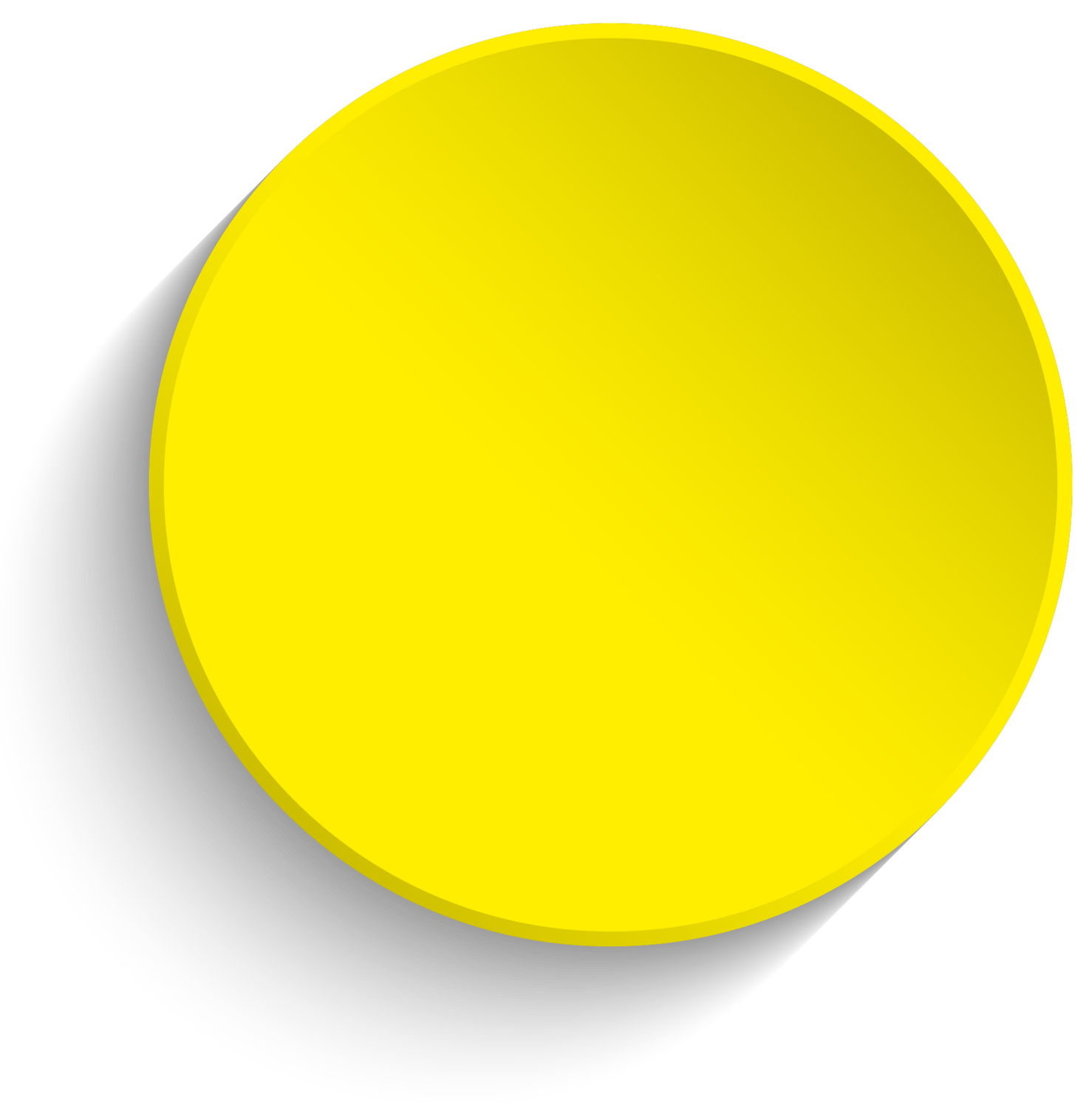 Yellow
Yellow
Associated with: optimism, happiness, playfulness, trust, goodwill
Yellow is sometimes used as an alternative to white to work against red backgrounds. Surprisingly though, yellow has a dark side! According to Small Business Trends, “yellow can make babies cry” and can be used to “create a sense of anxiety that can draw in impulsive buyers”
Hopefully, this given you some tips on how to tackle January sales marketing effectively. If you want to explore how materials such as posters, POS, signage and more can help you to promote your offer, visit us at www.solopress.com or give us a call on 01702 460047.
*Data shown in our graphs was gathered as part of the Solopress 2019 Christmas Survey. All statistics shown are based on the responses of 100% of the 1204 respondents. Data gathered through the survey remains the property of AGA Printing Ltd trading as Solopress Ltd. It may not be reproduced without acknowledgement via back link. All copyright and other intellectual property rights are reserved.

